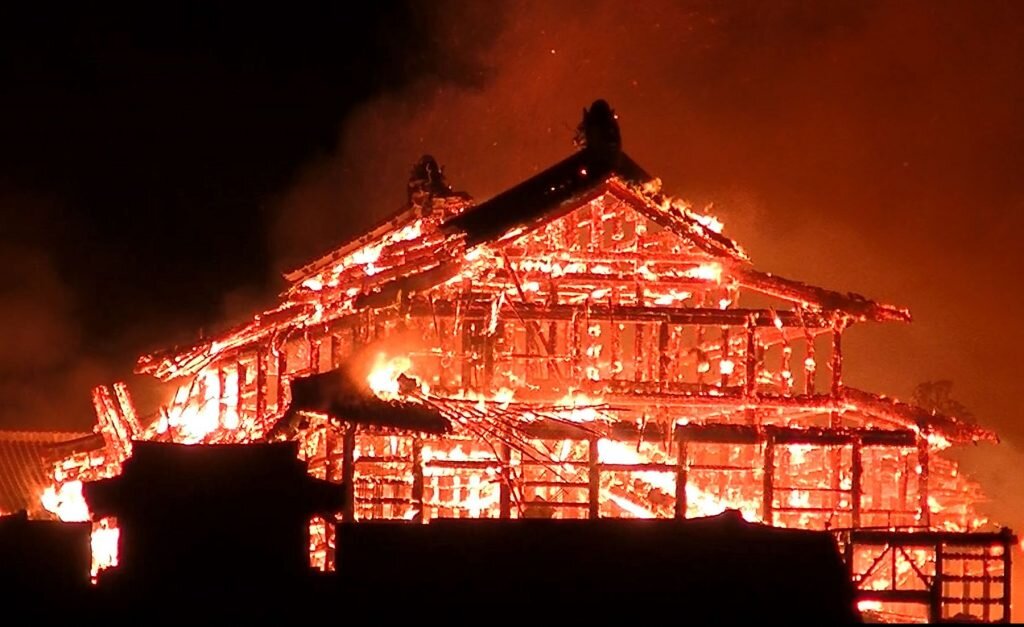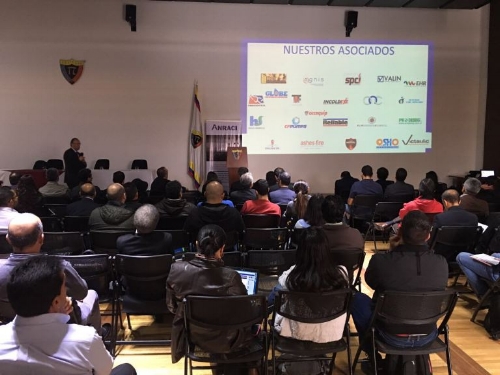While the investigation continues, preliminary reports from Paris suggest that the April 15, 2019 fire that devastated the 850-year old Notre Dame Cathedral was most likely caused by an electrical short circuit. Firefighters moving quickly up hundreds of steps to reach the attic level where the fire originated were credited with preventing the damage from being even worse. The response of 500 firefighters was able to bring the fire under control within 5 hours, but only after the cathedral’s roof and spire fell to the ground, with the stained-glass windows and wooden interior destroyed.
The New York Times reported that the cathedral’s attic was equipped with an automatic fire alarm system, but with an arrangement that made a substantial delay in response almost a certainty. Rather than send a signal automatically to the fire brigade, it required that a guard climb a set of steep steps to the attic to confirm the fire, a trip that was estimated to take six minutes or more. Once confirmed, the fire could be reported, but by the time the fire brigade could arrive there could be a total delay of 20 minutes or more. In addition, a computer glitch may have first inaccurately indicated the location of the fire.
Inadequate alarm systems are a significant fire protection deficiency, but automatic sprinkler systems have proven their ability to make up for a wide range of deficiencies, including inadequate alarms. Sprinkler systems start working before the arrival of the fire brigade.
Fires have been the bane of churches since the Middle Ages, and continue to be the leading cause of their destruction. In the Boston area alone, two devastating fires in historic churches within the past year have resulted in firefighter injuries and over a million dollars each in damage. The First Baptist Church in Wakefield, Massachusetts burned on October 23, 2018, and the Holy Mt. Zion Church in Roxbury, Massachusetts was totally destroyed on February 2, 2019.
The list of churches that have succumbed to fire is a long one, but there is another list that is growing – churches that survived fires due to protection by fire sprinkler systems. Here are some examples from the U.S. within the past five years:
Second Baptist Church, Houston, Texas – January 1, 2015
A single sprinkler extinguished a fire that broke out in a television set in the lobby of the unoccupied church. A small amount of water damage resulted.
New Shiloh Christian Center, Melbourne, Florida – February 16, 2015
Burglars broke into an area of the building that was slated for a trade school, kicked in doors, scrawled graffiti, and set fire to some furniture and chairs in an attached storage unit, and a locked door leading into the maintenance area where the electrical room and a large diesel tank were located. Sprinklers operated, keeping the fire from spreading to the electrical room. The main sanctuary, housed in the same 125,000 sq ft building, was not affected by smoke or fire. Damage was limited to $5000.
Lutheran Church of Hope, Anchorage, Alaska -- January 30, 2016
Vandals broke into the church through a back window, tipped over the baptismal font in the sanctuary, ripped through some mail, then made their way to the kitchen, where they ignited the stovetop and piled papers on top of the burners. The fire activated the sprinkler system, with a single sprinkler dousing the fire before it could spread to other parts of the church. Smoke and heat damage was limited to the kitchen itself.
Love Church, Fort Wayne, Indiana – June 28, 2017
A fire in a storage area was largely extinguished by the sprinkler system. Officials said the sprinkler system prevented major damage to the building.
Silverdale Baptist Academy, Chattanooga, Tennessee – August 4, 2017
A fire that began in a utility room was completely extinguished by the sprinkler system, and investigators estimated the damage at $2000. A fire department spokesman credited the sprinkler system with saving the $4 million structure.
Christ Unity Baptist Church, Modesto, CA – August 7, 2017
A 57-year old caretaker for the church set 7 fires in the basement, which were contained by the sprinkler system. Firefighters were prevented from entering the building due to a standoff between the arsonist and a SWAT team. The caretaker was convicted of felony arson and sentenced to 18 years in prison.
Christian Church Voice of Salvation, Methuen, Massachusetts –September 24, 2017
An arsonist used accelerant to start a fire, but one sprinkler activated to contain the damage to a rug and some chairs until the arrival of the fire department.
Church of Jesus Christ of Latter-day Saints, Tracy, California – October 23, 2017
A fire in a staircase was extinguished by the sprinkler system. Responding firefighters found only light smoke and water, which they were able to clean up in an hour after their arrival.
Concord Fortress of Hope Church, Kansas City, Missouri – October 29, 2017
A maintenance worker scrawled racist graffiti and set a fire in an attempt to cover up a burglary that allowed him to buy drugs. The fire, which started with the ignition of paper towels and clothing placed beside an office chair, was extinguished by the sprinkler system.
Lithia Springs Church of God, Lithia Springs, Georgia – March 31, 2018
Vandals broke into the church gym, mixed chemicals in a trash can, and spread them as accelerants over tables to set fire to bags of food donations intended to feed 2,000 needy students over their spring break. The sprinkler system activated to contain the fire and prevent it from spreading to the building structure.
Timberwood Church, Nisswa, Minnesota – April 20, 2018
A kitchen fire on the morning of Friday April 20th activated the sprinkler system, but the church was cleaned up and ready for Sunday morning services on April 22nd.
Lifeway Fellowship Church, Killeen, Texas – May 13, 2018
An electrical short circuit in a wall ignited insulation materials at 4 am, but was controlled by the fire sprinkler system until the arrival of the fire department.
Brooklake Church, Federal Way, Washington – June 21, 2018
A fire at the church entrance, believed to been ignited by a discarded cigarette, spread to an overhead awning but was prevented from entering the interior of the church by the activation of a fire sprinkler. Damage was estimated at $150,000, but was limited to the building exterior.
Living Waters Lutheran Church, Lino Lakes, Minnesota – January 25, 2019
A fire started in a pot being heated on a stovetop to melt wax for a pre-school program class project. A teacher removed the flaming pot from the stove with the intention of taking the pot outside but only made it as far as the hallway before being burned. A single sprinkler activated to extinguish the fire.







